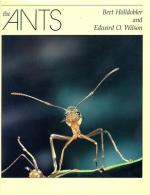|
This section contains 950 words (approx. 3 pages at 400 words per page) |

|
Army Ants
A group of ant species, which exhibit nomadic behavior and swarming predatory behavior. Army ants will change nest sites frequently, in some species on a nearly daily basis, moving along well-defined and protected migratory pathways. Army ant workers forage in groups and frequently kill much larger organisms. Army ants are also known as driver or legionary ants. Eciton burcelli is, perhaps, the best-known species of army ant.
Brood
Ants reproduce by laying eggs, and an individual ant will proceed through several developmental stages from egg, through nymph, larvae, and pupae, to the final, adult stage. Although the egg and pupae stages are not socially active stages, individuals in the nymph and larvae stages interact with other colony members. All immature (non-adult) individuals are referred to, collectively, as the brood. Worker ants spend a great proportion of their time caring for the brood.
Castes
Ant colonies are...
|
This section contains 950 words (approx. 3 pages at 400 words per page) |

|




